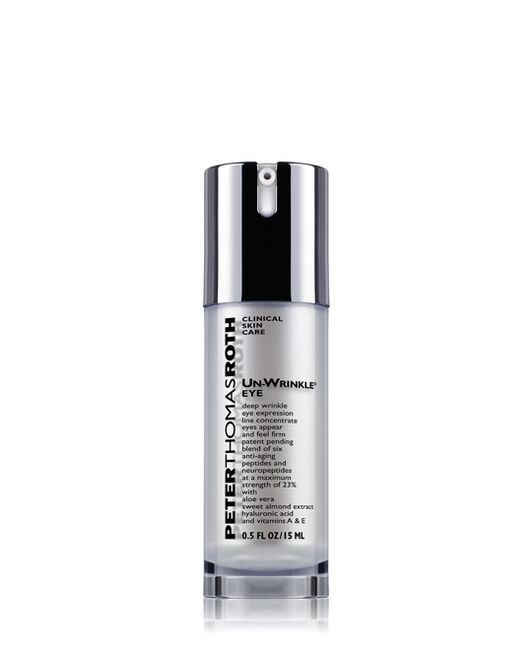A highly concentrated 23% solution of six powerful anti-aging peptides and neuropeptides combined with three new cutting-edge ingredients created especially for the eye area to help reduce the appearance of deep and fine eye wrinkles. Includes neuropeptides SYN-AKE* at 4%, SNAP-8* at 10% and ARGIRELINE* (hexapeptide) at 3% along with peptides SYN-COLL* at 3% and MATRIXYL™ 3000* (a dual peptide) at 3%. Helps diminish the appearance of lines, crows feet and other skin creases around the eye area. Advanced technology helps leave the delicate eye area looking firmer, softer, smoother and younger. Ophthalmologist-tested and approved. Suitable for sensitive eyes and contact lens wearers.






by Negin
It works. I can notice reduction of lines under my eyes.
by Kate
Love the Unwrinkle Eye!! It is a fabulous product for all the area around my eyes!
by Amanda
I bought this eye cream several weeks ago when it was a special deal. It is so nice. The cream soaks into your skin quickly. It is not greasy and one can feel the difference almost immediately. I am seeing a difference in my skin texture.
by Lisa
I adore this product and the entire Un-Wrinkle line. Unlike many other brands that promises results this line of products actually delivers on its claims.
by Samantha
This is my favorite eye cream! It’s gentle but very moisturizing. I noticed a difference after using it for only a few days! Please don’t discontinue it!!
by Anna
noticeable improvement after a few weeks. You only need a drop under each eye.